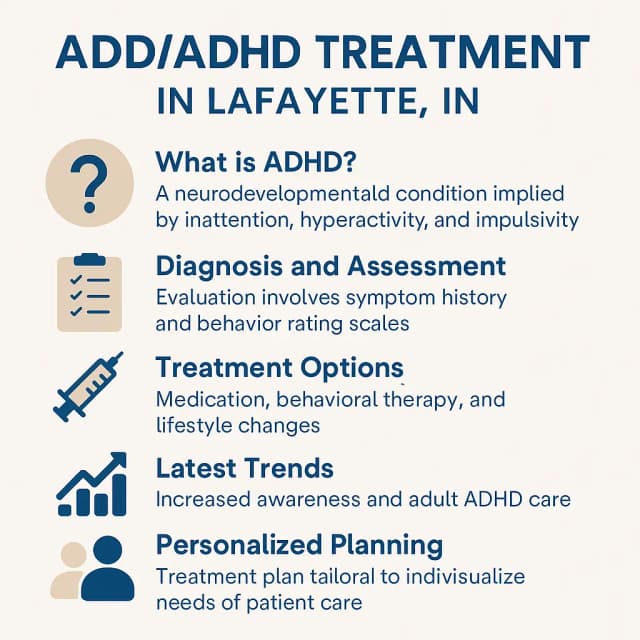Understanding Testosterone Injections and Their Benefits
Testosterone injections are one of the cornerstone therapies used to treat male hypogonadism (low testosterone). In men whose testes do not produce sufficient testosterone, external replacement via injection can restore normal hormone levels, thereby alleviating a host of symptoms.
What Is Hypogonadism, and Why Is Testosterone Important?
Hypogonadism refers to a state in which the body fails to produce adequate testosterone (or produces nonfunctional testosterone). The causes may be primary (testicular failure) or secondary (pituitary or hypothalamic dysfunction), and they may be congenital or acquired later in life (due to trauma, medical conditions, medications, or aging).
Testosterone is critical in men for:
- Sexual health: libido, erectile function, sperm production
- Muscle and bone health: preserving lean mass, bone mineral density
- Mood and energy: overall vitality, mood stability, cognition
- Metabolic regulation: fat distribution, insulin sensitivity, lipid profile
When testosterone levels drop below a threshold (often < 300 ng/dL or lower, depending on lab norms) and symptoms are present, physicians may evaluate patients for replacement therapy.
How Testosterone Injections Work
Injections deliver exogenous (external) testosterone into the bloodstream. There are multiple formulations (esters) that differ by how quickly they release testosterone:
- Testosterone enanthate
- Testosterone cypionate
- Testosterone undecanoate (longer-acting)
These compounds, once injected (typically intramuscularly), are slowly hydrolyzed, releasing testosterone over days or weeks, thus maintaining more stable hormone levels depending on dosing frequency.
With proper dosing and monitoring, injections can restore testosterone to physiologic (“normal”) levels, reversing many of the deficits associated with low testosterone.
Key Benefits of Testosterone Injections
When used appropriately under medical supervision, testosterone injections may confer several benefits:
- Enhanced energy, mood, and vitality
- Many men report improvement in fatigue, motivation, and general sense of well-being within a few weeks.
- Improved sexual function
- Libido, erectile performance, and sexual satisfaction often improve after treatment starts.
- Increased muscle mass and strength
- Because testosterone promotes protein synthesis and anabolic activity, users tend to regain or build lean muscle, and strength gains may follow over months.
- (See also reviews on androgen replacement benefits.) American Academy of Family Physicians+2PMC+2
- Bone health preservation
- Testosterone helps maintain bone mineral density, reducing the risk of osteoporosis and fractures in men with low levels. PMC+1
- Better body composition and metabolic effects
- Replacement therapy may help reduce fat mass, improve insulin sensitivity, or favorably shift lipid profiles in some men, though results vary. Annual Reviews+2ScienceDirect+2
- Potential cardiovascular neutrality
- A large randomized trial published in the New England Journal of Medicine found that testosterone replacement was noninferior to placebo in terms of major cardiovascular events. New England Journal of Medicine
- This finding has helped assuage some earlier concerns about heart risk. Cedars-Sinai+2Cleveland Clinic+2
However, it's important to bear in mind that the benefits vary among individuals, and therapy must be tailored and closely monitored.
Latest Trends in Testosterone Replacement Therapy (TRT)
The landscape for TRT is evolving—both in terms of technology and market dynamics.
Market Growth and Projections
- Some industry reports estimate the global market for testosterone replacement therapy was valued around USD 2.04 billion–USD 2.16 billion in 2024 and project steady growth. OUP Academic+3The Business Research Company+3Global Market Insights Inc.+3
- Forecasts often expect a compound annual growth rate (CAGR) between ~3 % to ~4 %, pushing market valuations toward USD 2.9–3.5 billion or more by the early to mid-2030s. Global Market Insights Inc.+2Technavio+2
- Growth drivers include increased awareness of hypogonadism, aging populations, greater access via telehealth, and innovation in drug delivery formats. The Business Research Company+2U.S. Pharmacist+2
- Some reports also note that retail prices of certain TRT products have declined over recent years, possibly due to competition, patent expiration, or generic entry. AUA Journals
Shifts in Formulations and Delivery Methods
Historically, injectable testosterone esters and surgically implanted pellets were dominant in male hormone replacement. PubMed+2OUP Academic+2 However, more options have emerged:
- Transdermal gels and patches
- These became widely used because of ease, but they may suffer from variable absorption and skin transfer. Cleveland Clinic+3PubMed+3American Academy of Family Physicians+3
- Buccal/mucoadhesive formulations
- Newer sustained-release buccal systems are under development as alternatives with less systemic fluctuation. PubMed+2OUP Academic+2
- Oral testosterone preparations
- Some newer oral formulations (e.g., JATENZO) have been studied, though gastrointestinal side effects (nausea, diarrhea) are more common. PMC+2OUP Academic+2
- Subcutaneous pellets / implants
- Pellet implants or microsphere formulations are offered in some practices to provide steady baseline release over months.
Patients (in consultation with their clinician) can choose among these options depending on lifestyle, cost, risk tolerance, and preference.
Usage Trends & Demographics
- From 2003 to 2013, overall TRT use increased substantially, especially in younger men (18–45 years), where it grew fourfold, compared to a threefold increase in older age groups. U.S. Pharmacist+4PubMed+4PMC+4
- During that time, injectable usage notably rose: injection use doubled between 2009 and 2012 and surpassed topical gel use by 2013. PMC+2CDC Stacks+2
- More recently (2018–2022), some age groups saw steep percentage increases in TRT prescriptions (e.g. 120% increase in ≤ 24-year-olds, though interpretations must be cautious). U.S. Pharmacist
- Public interest, as measured by online search trends, has also risen significantly in the last decade. ScienceDirect+1
- Clinical societies (e.g., American Urological Association, Endocrine Society) have updated guidelines (e.g. in 2018) to better define testosterone deficiency and management standards, affecting prescribing patterns. Nature+1
These trends reflect increased awareness, evolving technology, and shifting attitudes toward men’s hormonal health.
Expert Insights: Personalized Therapy & Monitoring
The consensus among endocrinologists, urologists, and hormone specialists is that no “one size fits all” approach exists. Key principles include:
1. Individualized Treatment Plans
- Diagnosis should require persistent symptoms plus confirmed low testosterone levels (usually measured in the morning on two or more occasions). Cleveland Clinic+2Annual Reviews+2
- Comorbidities (cardiovascular disease, sleep apnea, prostate health, fertility goals, polycythemia risk, obesity, metabolic syndrome) must be thoroughly assessed. American Academy of Family Physicians+4Annual Reviews+4PMC+4
- The choice of formulation (injectable, gel, oral, implant) should align with patient preference, pharmacokinetics, cost, and risk profile.
2. Dose Titration & Monitoring
- After initiation, clinicians should regularly measure total and free testosterone, hematocrit/hemoglobin, lipid profile, PSA, liver function, cardiovascular markers, and symptoms. Cleveland Clinic+3PMC+3Annual Reviews+3
- Hematocrit (red blood cell count) is crucial—elevated levels (polycythemia) may necessitate dose reduction or phlebotomy. PMC+2PMC+2
- Monitor for adverse symptoms: sleep apnea exacerbation, edema, mood swings, skin reactions, changes in prostate parameters. PMC+3Harvard Health+3Medical News Today+3
- Long-term follow-up is often required, including reassessment of continued need vs. adjustment.
3. Lifestyle Integration
Hormone therapy is rarely standalone; lifestyle interventions maximize results:
- Exercise (resistance training, cardiovascular) complements the anabolic effects of testosterone.
- Nutrition: diets with balanced fats, protein, micronutrients; some meta-analyses suggest fat intake might influence testosterone levels. arXiv
- Sleep quality: insufficient or disturbed sleep can suppress endogenous testosterone.
- Weight management: obesity and metabolic syndrome often reduce endogenous testosterone; loss of excess weight may help.
4. Safety and Risk Management
Expert guidance stresses risk-benefit evaluation, especially in older men or those with comorbidities:
- The Endocrine Society recommends against blanket TRT in all older men with borderline low levels; instead, limit treatment to those with clear symptoms and consistent low values. Annual Reviews
- Recent trial evidence (e.g. from the TRAVERSE study, reported via NEJM) adds reassurance that TRT may not increase cardiovascular risk in properly selected men. New England Journal of Medicine+2Cedars-Sinai+2
- In early 2025, the U.S. FDA updated labeling for testosterone products, removing some language about cardiovascular risk (based on new trial data), while adding warnings about elevated blood pressure and retaining limitations for “age-related hypogonadism.” Reuters
- Contraindications include untreated prostate or breast cancer, severe untreated sleep apnea, uncontrolled heart failure, or hypercoagulable states. PMC+2American Academy of Family Physicians+2
In short, regular follow-ups and laboratory checks are critical to maintaining safety and efficacy over time.
Common Questions & Concerns: Addressing Risks and Outcomes
What Side Effects Can Occur?
Possible adverse effects include:
- Reduced sperm production / infertility: exogenous testosterone suppresses the hypothalamic-pituitary-gonadal axis, reducing intratesticular testosterone and sperm output. PMC+3PMC+3PMC+3
- Skin reactions, acne: elevated testosterone may increase sebum production, leading to acne or other dermatologic issues. Harvard Health+2News-Medical+2
- Polycythemia (high hematocrit): increased red blood cell mass means thicker blood, raising the risk of thrombosis or clotting events. PMC+3PMC+3PMC+3
- Sleep apnea exacerbation: in some men, TRT worsens obstructive sleep apnea. Harvard Health+2PMC+2
- Prostate effects: benign prostatic hyperplasia (BPH) symptoms may worsen; while no strong evidence links TRT to causing prostate cancer, careful screening is essential. Annual Reviews+3PMC+3PMC+3
- Cardiovascular risk and clotting: although new data is more reassuring, older studies raised concerns. Cedars-Sinai+3Cleveland Clinic+3Harvard Health+3
- Other risks: edema, gynecomastia, liver enzyme changes (especially with oral forms), mood fluctuations. OUP Academic+4PMC+4PMC+4
How Quickly Can Patients Expect Results?
- First few weeks: many patients observe improvements in energy, mood, libido, and sense of vitality.
- Over months: gains in lean muscle, strength, and sexual function often become more evident.
- Bone health changes: improvements may take several months to years to manifest significantly in bone density.
Is TRT Safe for Older Adults?
Yes — but cautiously. In older men (≥ 65 years or so), the decision must be more nuanced:
- Age-related decline in testosterone is expected; therapy should only be considered when symptoms are severe and levels are consistently low. Annual Reviews+2Cleveland Clinic+2
- Comorbid conditions (cardiovascular disease, renal disease, prostate health) must be carefully evaluated.
- Clinical trials suggest no excess cardiovascular events when therapy is carefully monitored, but long-term effects remain under investigation. Annual Reviews+3New England Journal of Medicine+3Cedars-Sinai+3
- Guidelines often recommend lower target levels (mid-normal) rather than supraphysiologic dosing in older men. Annual Reviews+1
What Does the Latest Research Say?
- A 2023 trial of over 5,200 men aged 45–80 with low testosterone found no significant increase in major cardiovascular events for those on testosterone therapy compared to placebo. New England Journal of Medicine
- Systematic reviews note that while benefits are documented (sexual, mood, bone, muscle), uncertainties remain about long-term risks (prostate, cardiovascular, mortality). PMC+3PMC+3Annual Reviews+3
- Genetic (Mendelian randomization) studies suggest lifelong higher testosterone is linked to lower body fat and stronger bones — but also to hypertension, prostate cancer risk, and reduced “good” (HDL) cholesterol. eLife
Thus, ongoing surveillance, risk adjustment, and patient-specific tailoring remain central.
Testosterone injections play a crucial role in managing low testosterone levels, with research and technological advancements improving their effectiveness. If you or someone you know is struggling with symptoms of low testosterone, contact Innovative Medicine today for a personalized consultation.
For more information, call us at (765) 471-1100 or visit our office at 3554 Promenade Pkwy suite h, Lafayette, IN 47909, USA.

